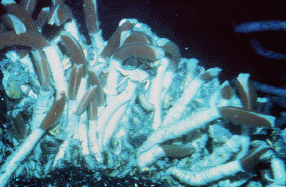These are tubeworms. Each worm is over six feet long and has a protective white tube surrounding a red body that pokes out the top.
Click on image for full size
Image copyright 1997 by the American Geophysical Union. Further electronic distribution is not allowed.
Creatures which live in Harsh Environments
There are many types of living things that are able to live in difficult environments on Earth. The picture to the left shows an example of some of these creatures. These are tubeworms that live at the bottom of deep oceans near hydrothermal vents, which are like undersea volcanoes. It is not a very welcoming environment in which to live, but the tubeworms manage to survive! The vents heat the seawater, so it's very hot. It is completely dark because light cannot penetrate through so much water. There is also a lot of pressure from the weight of the water above.
Tubeworms live near hydrothermal vents in both the Pacific and Atlantic Oceans. Each worm is as tall as a basketball player! They make the tubes themselves to protect from predators such as crabs and fish that might like to nibble a tasty tubeworm.
Tubeworms live with bacteria inside them. The bacteria are helpful, making food from chemicals that come out of the vent and water. The tubeworms help the bacteria get the materials to make the food and provide them with a safe place to live. This relationship is called symbiosis because both creatures benefit from living together.
Last modified June 17, 2003 by Lisa Gardiner.
You might also be interested in:
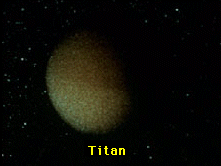
Titan's atmosphere is a lot like the Earth's, except that it is very cold, from -330 degrees to -290 degrees! Like the Earth, there is a lot of Nitrogen and other complex molecules. There also may be an
...more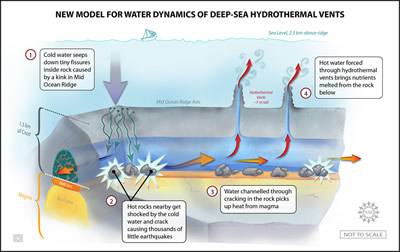
The Earth has a large system of ridges along the ocean floor that play a big part in the geology of the planet. A team of seismologists (geologists who study earthquakes) has been studying a place called
...more
Jupiter's atmospheric environment is one of strong gravity, high pressure, strong winds, from 225 miles per hour to 1000 miles per hour, and cold temperatures of -270 degrees to +32 degrees (freezing temperature).
...more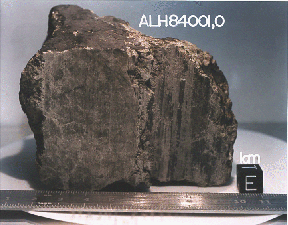
In July, 1996, it was announced that Dr. David McKay, along with a team of scientists at Johnson Space Center (a division of NASA), had discovered possible fossils of bacteria in a meteorite named ALH84
...more
Saturn's atmospheric environment is one of strong gravity, high pressure, strong winds, from 225 miles per hour to 1000 miles per hour, and cold temperatures of -270 degrees to +80 degrees. With winds
...more
Autotrophs are organisms that can "make their own food" from an inorganic source of carbon (carbon dioxide) given a source of energy. Most autotrophs use sunlight in the process of photosynthesis to make
...more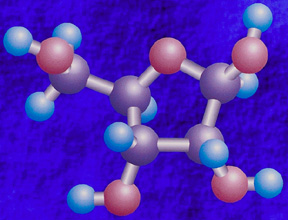
In the warm primordial ocean, aggregates of amino acids, proteins, and other hydrocarbons came together into a form called *coacervates*. Amino acids will spontaneously form coacervates in the same way
...more


